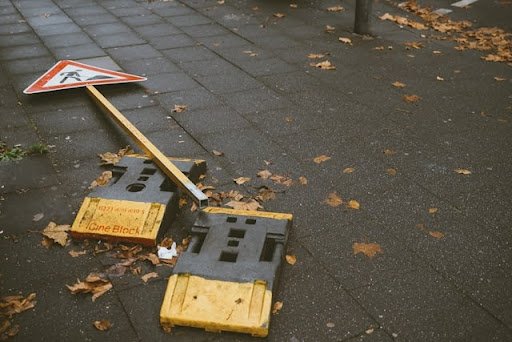Slip and fall accidents are among the most common personal injury cases reported across Canada and the United States. These incidents may appear minor at first glance, but they can lead to severe injuries, prolonged recovery times, and significant financial losses. Whether it’s a wet floor at a grocery store or uneven pavement on a sidewalk, the consequences of falling unexpectedly can be life-changing. Understanding the different types of slip and fall accidents can help people identify risks, prevent injuries, and take the right steps if an accident occurs.
In this blog, we’ll explore five of the most common types of slip and fall accidents and offer practical insights into their causes, potential injuries, and legal implications.
1. Wet or Slippery Surface Falls
Perhaps the most recognized type of slip and fall accident, wet surface falls occur when individuals lose their footing due to moisture or other substances that reduce traction.
Common Causes:
- Recently mopped or waxed floors without warning signs
- Spills of water, oil, or other liquids in grocery stores or restaurants
- Rain, sleet, or snow tracked into building entrances
Where They Happen:
- Supermarkets
- Office buildings
- Shopping malls
- Residential properties
Possible Injuries:
- Sprains or strains
- Fractured wrists or hips
- Back and spinal cord injuries
- Head trauma or concussions
Prevention Tips:
- Property owners should promptly clean spills and display warning signs
- Individuals should wear appropriate footwear in wet conditions and walk carefully
In cases where property owners or managers fail to maintain a clean and safe environment, injured individuals may have grounds for a personal injury claim.
2. Trip and Fall on Uneven Surfaces
Uneven walking surfaces can cause individuals to lose their balance and fall. These types of accidents are particularly common in urban areas and construction zones where sidewalk maintenance or flooring transitions are not properly managed.
Common Causes:
- Cracked or broken sidewalks
- Potholes in parking lots
- Uneven floor tiles or carpeting
- Poor lighting that hides trip hazards
Where They Happen:
- Sidewalks and driveways
- Apartment complexes
- Public buildings and older establishments
Possible Injuries:
- Knee injuries
- Broken bones
- Elbow and shoulder injuries
- Facial lacerations or dental damage
Prevention Tips:
- Property managers should routinely inspect and repair walkways
- Adequate lighting should be provided in all public and private spaces
When someone trips due to a neglected surface, the party responsible for maintaining that area may be held liable, especially if complaints or warnings had previously been ignored.
3. Staircase Falls
Stairs are another common location for serious falls, especially if they are poorly designed, inadequately lit, or not maintained properly. Falls on staircases are particularly dangerous because of the height and force involved.
Common Causes:
- Broken or missing handrails
- Uneven steps or poor construction
- Loose carpeting or tiles on stair treads
- Slippery surfaces without non-slip grips
Where They Happen:
- Residential homes
- Apartment buildings
- Commercial properties
Possible Injuries:
- Spinal cord injuries
- Hip fractures
- Traumatic brain injuries (TBIs)
- Internal bleeding
Prevention Tips:
- Ensure handrails are secure and up to code
- Install adequate lighting
- Use anti-slip materials on stairs
Landlords and property owners have a legal obligation to ensure staircases are safe and well-maintained. Neglecting this duty may result in liability for fall-related injuries.
4. Falls Due to Weather Conditions
Weather-related slip and fall accidents are particularly common during the winter months. Snow, ice, and even heavy rain can create hazardous walking conditions on sidewalks, driveways, and parking lots.
Common Causes:
- Failure to salt or shovel snow and ice
- Wet and muddy walkways after rainfall
- Black ice formation in shaded areas
Where They Happen:
- Entrances to public buildings
- Residential and commercial parking areas
- Sidewalks maintained by municipalities
Possible Injuries:
- Broken arms or legs
- Back injuries
- Head trauma
- Soft tissue damage
Prevention Tips:
- Property owners should follow local regulations regarding snow removal and salting
- Walkers should wear non-slip footwear and take cautious steps
Depending on provincial or municipal law, property owners may be legally obligated to clear snow and ice within a certain time frame. Failure to do so could result in liability if someone slips and is injured.
5. Falls Caused by Obstacles or Clutter
Slip and fall accidents can also happen when walkways are blocked or cluttered with objects, creating tripping hazards. These are often preventable with good housekeeping practices.
Common Causes:
- Loose wires or cables across the floor
- Boxes, bags, or tools left in walking paths
- Poorly positioned rugs or mats
- Furniture that obstructs movement
Where They Happen:
- Warehouses and workplaces
- Retail stores
- Homes with poor organization
Possible Injuries:
- Joint dislocations
- Muscle strains
- Cuts and abrasions
- Fractures
Prevention Tips:
- Maintain clean, unobstructed walkways
- Secure cords and electrical wires
- Keep personal and commercial spaces organized
Business owners must take reasonable steps to keep their premises safe for employees and visitors. Failing to do so may result in liability if an injury occurs due to clutter or negligence.
Legal Considerations for Fall and Slip Accidents
All five types of accidents discussed above fall under the umbrella of fall and slip accidents, a category recognized in personal injury law. Whether the incident occurs in a public place, private property, or commercial establishment, the injured party may be entitled to compensation if the accident was due to another party’s negligence.
Key Legal Elements of a Slip and Fall Claim:
- Duty of care: The property owner must owe a duty to maintain a safe environment.
- Breach of duty: That duty must have been breached through negligence.
- Causation: The breach directly caused the fall.
- Damages: The fall led to actual physical, emotional, or financial harm.
What to Do If You Experience a Slip and Fall Accident:
- Seek medical attention immediately, even if you feel fine at the time.
- Document the scene with photos, videos, and witness statements.
- Report the incident to the property owner or store manager.
- Consult a personal injury lawyer experienced in slip and fall cases to evaluate your legal options.
Final Thoughts
Slip and fall accidents are often dismissed as minor or insignificant, but the reality is that they can cause life-altering injuries and financial strain. Understanding the different types of slip and fall accidents empowers individuals to take precautions, recognize unsafe conditions, and pursue justice when necessary.
Whether it’s a slick surface, a poorly maintained staircase, or ice-covered steps, no one should suffer because someone else failed to take reasonable precautions. If you or a loved one has been injured in a slip and fall, knowing your rights is the first step toward recovery—both physically and legally.

